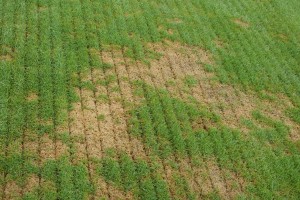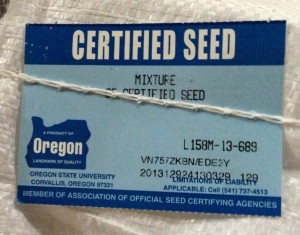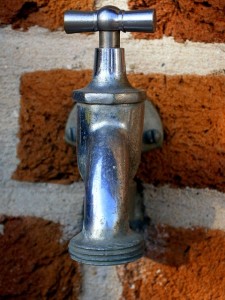“Help! My lawn is a mess!”
Ok, you made it through the summer, and now the lawn is a disaster. What do you do, and where do you start? These tips will help you grow a new, beautiful lawn!
 Out With the Bad
Out With the Bad
Of course weeds don’t need much help to start growing. When a lawn is thick and full, it actually prevents weeds from flourishing. However, when the lawn is stressed out and wilts or dies, these weeds move right in and take over! You may be tempted to purchase some Round-Up and just kill off the whole lawn, but this might be a little over-kill. There are selective materials that will help to control the Crabgrass, Nutsedge, and Broadleaf Weeds that have crept in.
 In With the Good
In With the Good
Stressed out lawn areas range from completely dead to just a general thinness across the yard. There are 2 primary methods to renovate your existing lawn. Core Aeration with Overseeding is great for a number of reasons. Doing two passes over your lawn with a Core Aerator pulls up plugs of soil, thatch, and grass approximately every 5”-6” throughout your lawn. Not only does this help to relieve compaction in the soil, and let the root system of the lawn get deeper, but it also provides thousands of points throughout the lawn to initiate new grass growth. When you over-seed after an aeration, the seedlings grow out of those holes, and thus help to thicken the lawn up. This is great for ANY lawn, no matter how thick and full it is already. In fact, the nicest lawns are the ones that are aerated every year!
If your lawn has dead patches bigger than 2 sq. ft., you should consider Slice-Seeding those areas. This type of seeding has a seeder with sharp discs that are approximately 1”-2” apart. They cut grooves into the soil, and then seed is inserted in those grooves. Running over these areas twice, in different directions, works up the soil even more, and is the best way to renovate a dead or extremely bare area.
 Get the Good Stuff
Get the Good Stuff
Seed is not just seed. There are hundreds of varieties, and for each variety, there are multiple cultivars of that type of seed. For instance, one type of Kentucky Bluegrass may be much more drought tolerant than another. One variety of Tall Fescue may be more resistant to Leaf Spot than another. One type of Perennial Ryegrass may have an 80% germination rate, and another 90%. It’s important to know what is good, and what is so-so. When you buy grass seed, every bag has a label. On the label you will find the percentage of ingredients. Seed manufacturers can cut the price down for a bag of seed by throwing other “stuff” in there to make it hit its weight for the bag to be “full”. These Inert Ingredients, Weed Seeds, and Less-Desirable Grass Species can mean the difference of your new lawn looking beautiful or needing seeded all over again! Become an educated consumer, do some research or ask those who know more about this than the guy that has worked at the Home Improvement store for 3 months.
 The Miracle Serum
The Miracle Serum
Now that you’ve done the hard work yourself, or paid someone else to do that for you, it’s time to throw the Miracle Serum on your lawn! It’s good, old water. Watering methods can also make a huge difference of how your new grass will grow. This concept can get really complicated, but this is essentially what you need to do. When the new seed is down, you want to keep that seed moist. That means you need to water 2-3 times per day for a short amount of time, like 15 minutes per spot. This will need to be done continually until the grass germinates. Once the grass germinates, you will then want to water the roots. This means stop watering every day. Water every-other day, or 3 times per week. The idea now, is to give a bunch of water so that your soil is moist to about 3” into the soil. This may take 45-60 minutes in each spot. When plant roots develop, they grow in search of water sources. The deeper they grow, the quicker the plant matures, and the easier it will be for that plant to survive in times of less moisture in the future. New lawn areas take awhile to be fully mature. Under the best circumstances, fertility, and with irrigation systems, sod farms go from dirt to sod that is ready to cut in about 6-8 months. That is the least amount of time to consider your grass plants, your babies. Keep them irrigated regularly if Mother Nature doesn’t cooperate.
Never Forget
Don’t forget how your lawn got all covered with weeds and bare in the first place. Provide your lawn with a great fertility program, and keep the unwanted visitors like weeds, insects, and disease out! Whether you choose to try this yourself, or would rather find a Professional Lawn Care Company in Lancaster, PA, make a plan and stick to it.

